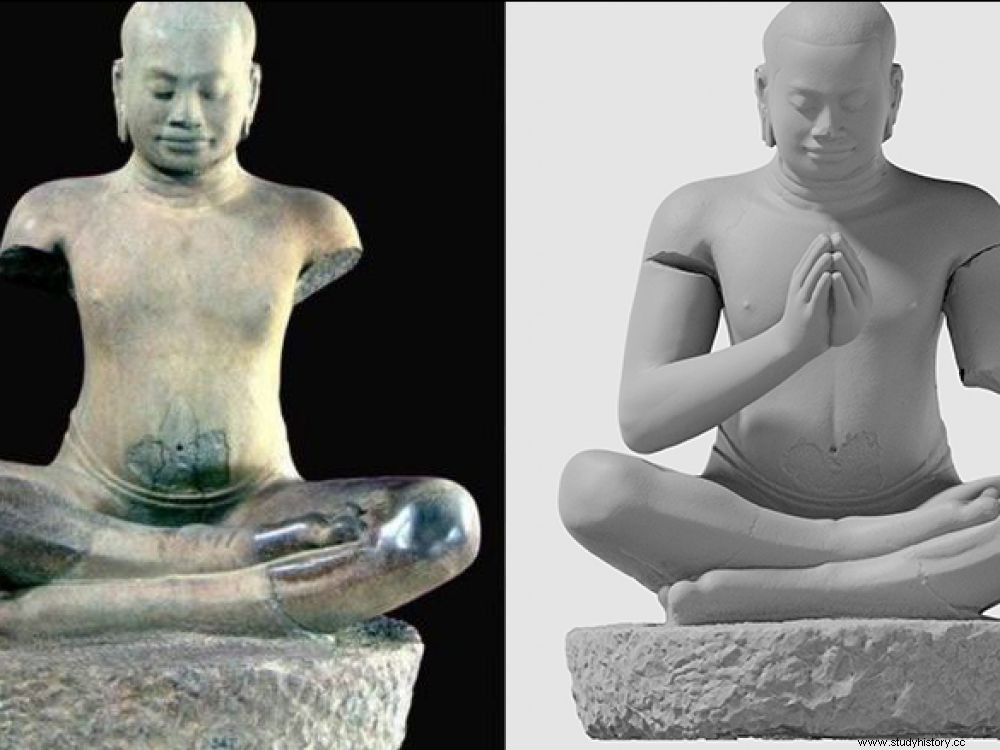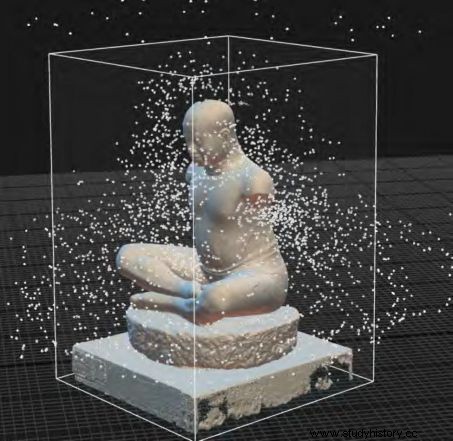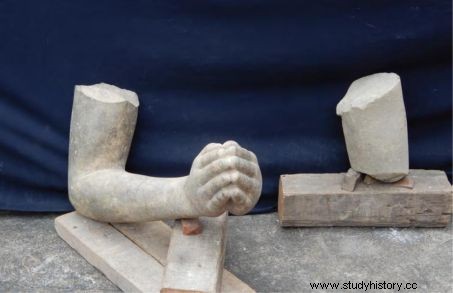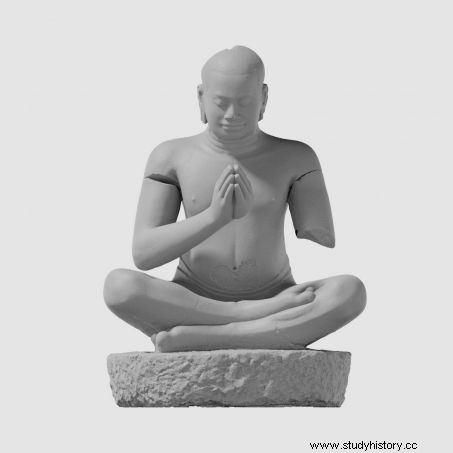Thanks to 3D and recent archaeological discoveries, an iconic work of Angkorian heritage in Cambodia has just been virtually reconstructed.

In Angkor (Cambodia), thanks to 3D, the true posture of the famous statue of the sovereign Jayavarman VII, could be found.
His smile and his closed eyes are recognizable among all. The bust of the Khmer ruler Jayavarman VII, one of the greatest kings of Angkor, Cambodia (1180-1218), is one of Southeast Asia's most iconic works. A delicately modeled sandstone body partly reconstructed in the 1930s when the head and torso were unearthed (see inset ). The arms were still missing... which in turn have just been found by a researcher from the French School of the Far East (EFEO) in an archaeological conservation center, a few kilometers from the famous temples! With the help of Cambodian engineers from the APSARA National Authority* and the French company Iconem, a 3D reconstruction of the statue with its new limbs was produced.
3D to virtually assemble the arms of the Cambodian statue

3D model of the statue of Sovereign Jayavarman VII, kept at the National Museum of Cambodia, in Phnom Penh, the capital. © APSARA National Authority / Eric Bourdonneau / Iconem
It all started barely five months ago, in September 2019, when Eric Bourdonneau went to the Conservation d'Angkor, an important archaeological repository in Siem Reap. On the spot, he is seized with a doubt while examining the remains. The expert from the French School of the Far East (EFEO), who is already at the origin of the discovery of the fragments of "Dancing Shiva" by Koh Ker , examines sculpted elements with perfect modeling. "I first noticed hands and a right arm, then, upstairs, a fragment of a left arm", explains the archaeologist, joined by Sciences et Avenir .

The arms of the statue of Jayavarman VII, found in the premises of the Conservation of Angkor, in Siem Reap. © Eric Bourdonneau /EFEO
A reconstruction made possible by the platform of the Iconem company
The expert immediately takes measurements, notes the location of the breaks and goes to the Royal Museum in Phnom Penh, the capital, to compare them with the statue of Jayavarman VII on display there."And there, everything matched !" , says Eric Bourdonneau, still moved. He then called on engineers from the Hydraulics Department of the APSARA National Authority, who were present in Angkor where they were carrying out 3D surveys of temples in collaboration with the French company Iconem. The archaeologist asks them if they can make a photogrammetric survey of the arms and hands, as well as that of the royal statue exhibited in Phnom Penh. The whole layering is going to be perfect! The sandstone limbs found belong to the royal bust.
 3D:The statue of Jayavarman VII in its original 13th century position. Credits:APSARA National Authority / Eric Bourdonneau / Iconem
3D:The statue of Jayavarman VII in its original 13th century position. Credits:APSARA National Authority / Eric Bourdonneau / Iconem
"This reconstruction of the complete model was made between France and Cambodia, thanks to a 'cloud' platform set up by Iconem:all photogrammetric data 3D could be deposited there so to perform the necessary powerful calculations" , explained Yves Ubelmann, its founder. A platform, still under development, whose vocation is to soon be accessible to the public. "Now we know precisely in what attitude the statue of Jayavarman VII was, smiles Eric Bourdonneau. His hands were clasped at heart level, in a so-called position in anjali [Sanskrit name editor's note], i.e. a gesture of homage and greeting". It is a safe bet that the Cambodian authorities will make the decision to replace the lost arms on the body of this veritable Angkorian "Venus de Milo". A statue-portrait that has just made remarkable progress.
An incomplete reconstruction
At the beginning of the 20
e
century, the first scattered elements of the royal statue of Jayavarman VII - a work deliberately dismembered in the 13
th
century during an anti-Buddhist iconoclastic wave - had been collected by archaeologists several miles away. In 1924, the bust was found, in a seated position, followed by the decapitated head, in 1931. Now, the arms have been added to this heritage treasure.
*APSARA:Authority for the Protection of the Site and the Development of the Angkor / Siem Reap Region
